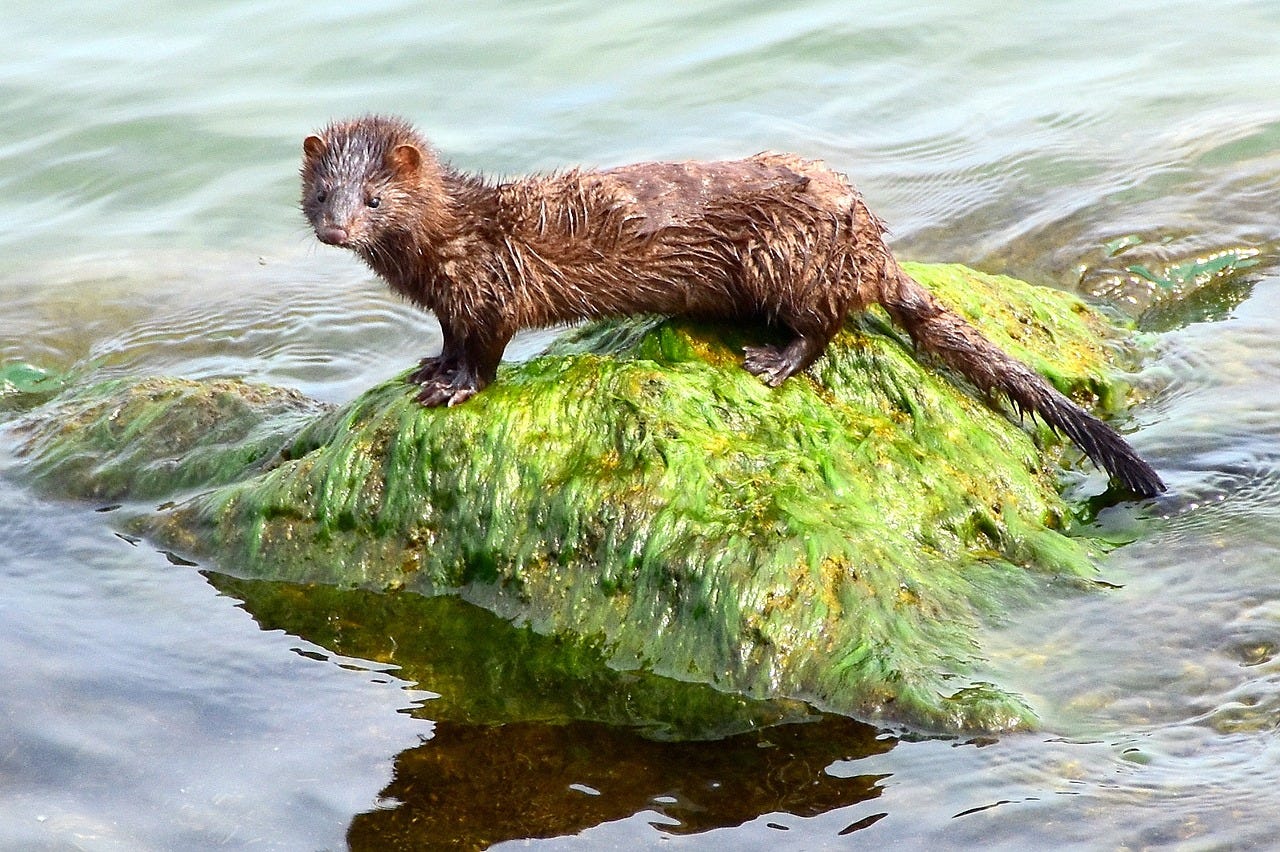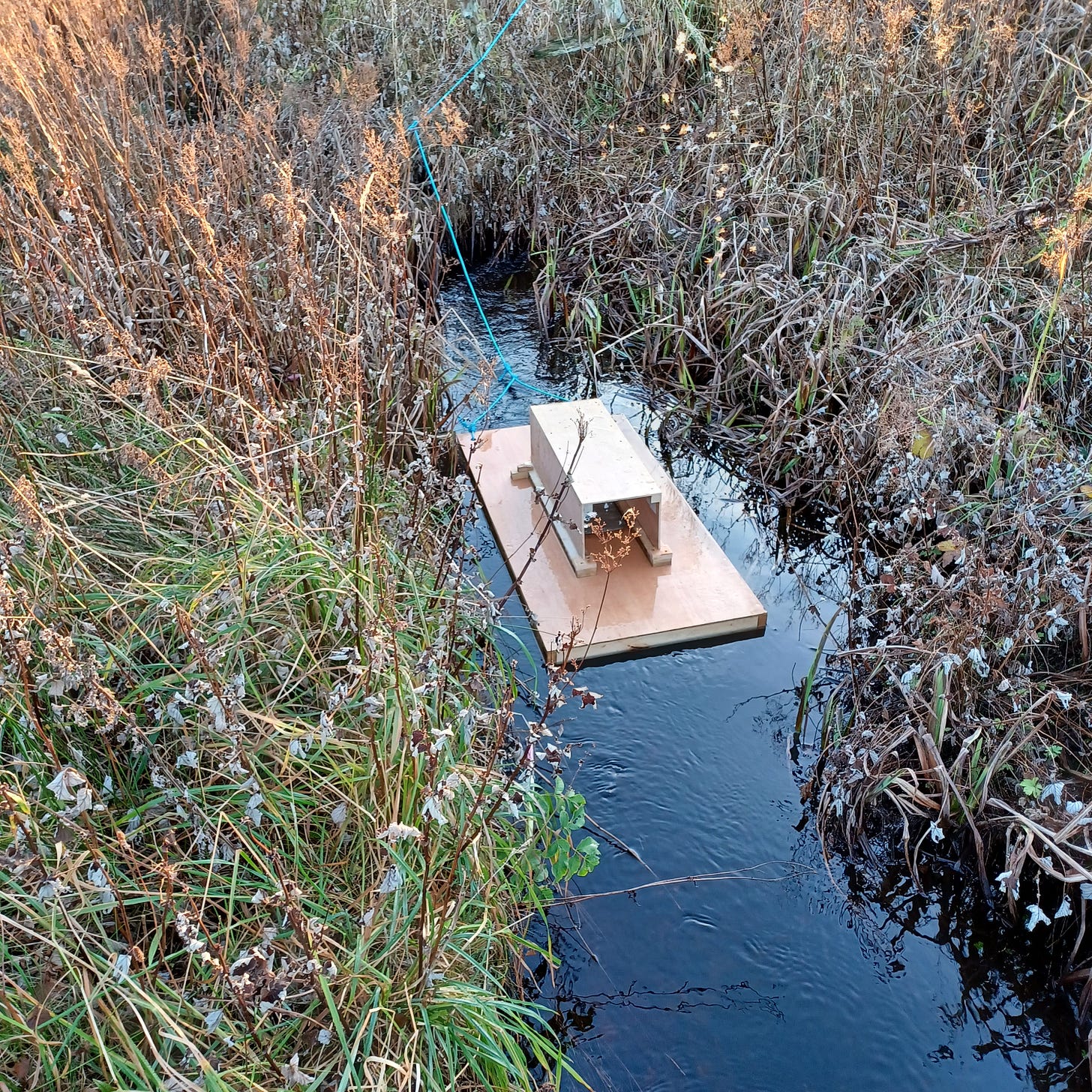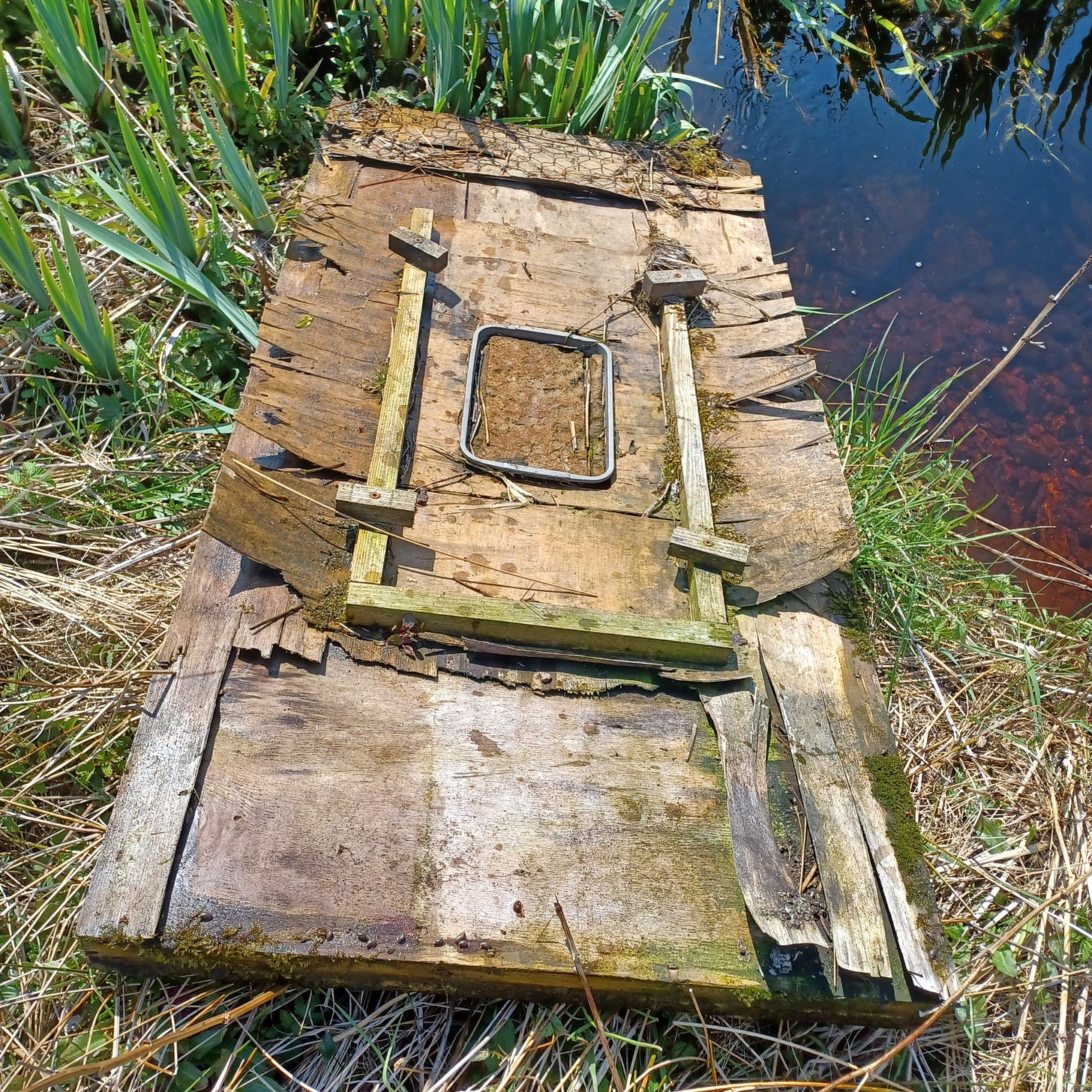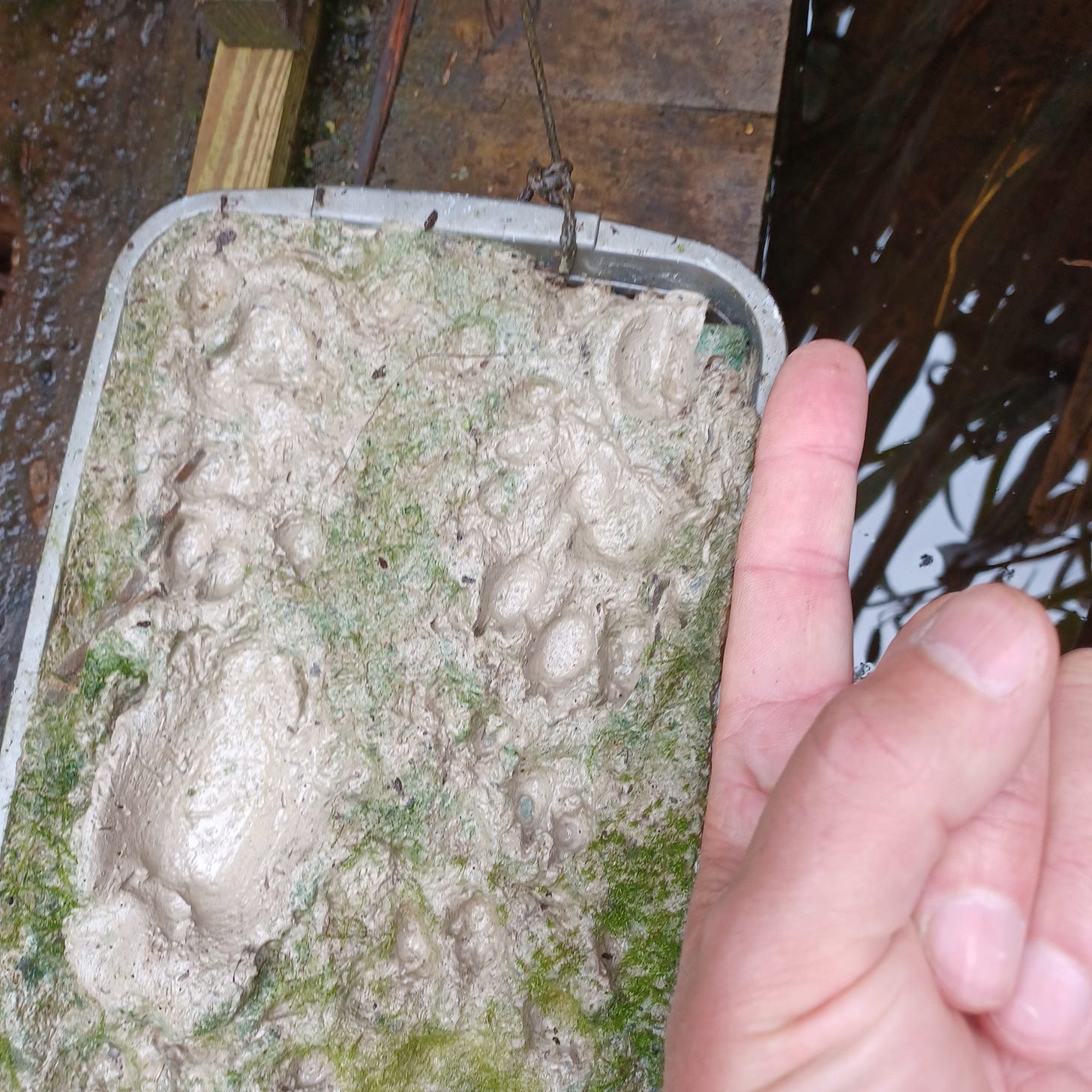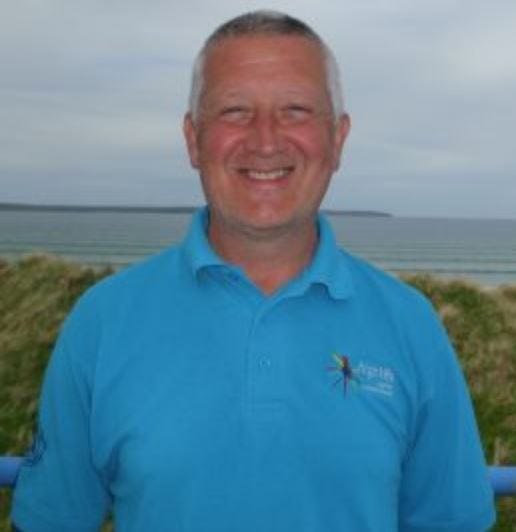The American mink (Neovison vison or Mustela vison) is a small member of the Mustelid family of mammals, related to otters, stoats, weasels, and pine martin and an invasive species in the UK.

My journey with mink monitoring began in north Sutherland several years ago, where I took on the role of monitoring a mink raft. For years, I faithfully checked the raft for footprints, and while I never confirmed mink presence, I was often greeted by the tracks of otters and, occasionally, rats. These experiences gave me an insight into the lives of our native wildlife and the ever-present need for vigilance against invasive species.
The Mink may look harmless given their size (smaller than a otter) but their presence has had devastating effects on native species. Introduced to the UK in 1929 for fur farming, for the once desirable fur industry (mink coats etc), mink have slowly escaped either accidentally or through deliberate releases over many years. They were eventually confirmed breeding in the wild in 1956.
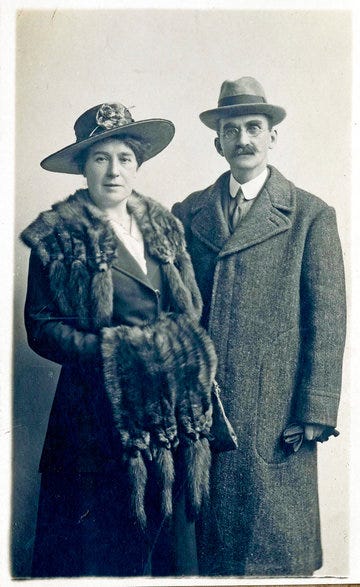
In Scotland, the first mink farm opened in 1938, and by the 1980s, wild mink had spread north of the Great Glen, though they are yet to reach the far north of Scotland and some of the Scottish islands.
Mink are highly effective predators and once established they can have significant adverse impacts on local species. Prey includes birds and their eggs (native and domestic), small mammals, fish, amphibians, shellfish, and crustaceans, but their effect on water voles is particularly alarming.

Water voles (Arvicola amphibius), the UK’s fastest-declining mammal, have suffered a 95% loss of range in the past century, partly due to habitat loss but increasingly because of mink.
Water voles of course have native predators, such as herons, owls, pike, and foxes but their defence against these natural predators was to retreat inside their bankside burrows. Unlike native predators, female mink can enter water vole burrows, wiping out entire colonies.
Mink are quick to colonise areas and easily cross waterbodies such as lochs, rivers and even sea channels to reach islands, this makes monitoring essental part of conservation efforts.
Currently, I’m responsible for the only mink raft in Caithness. It’s positioned along a small burn that flows from an important loch, home to a variety of wild bird species. The burn provides a lifeline for wildlife, but it’s also a potential corridor for mink, which makes the raft’s presence vital.
What is a Mink Raft?
For those unfamiliar, a mink raft is a simple yet effective tool used to monitor mink activity.
These anchored rafts float on the water surface and house a container of moist clay. This surface layer is positioned in the centre of the tunnel. Mustelids are very inquisitive mammals and mink are no exception. They will naturally investigate any unusual objects found around water courses and tunnels seem irresistible to them. Passing through one of these raft tunnels, they they leave their prints on the clay, which can then be identified by volunteers. Regular monitoring of these clay surfaces may indicate any presence of mink in an area.
Over time, my Caithness raft took a battering from the elements. When I discovered it recently, it was in quite a sorry state and needed replacing. The tunnel was completely missing, it is anyone’s guess where that finally ended up, after the wind carried it away! The plywood boards were also split and damaged yet amazingly the clay lined container was still there, complete with faint otter prints.
Thankfully, the West Sutherland Fisheries Trust, as part of the Scottish Invasive Species Initiative (SISI), stepped in to replace the damaged raft. This initiative is a another great example of cooperative conservation, bringing together ten fishery trusts and over 350 volunteers to monitor invasive mink across 43 river catchments in northern Scotland. It’s an extraordinary effort, with around 650 rafts and traps regularly checked by dedicated volunteers.
So, with a new raft in place, fresh clay and tunnel attached - back into the burn it went and I have resumed monitoring. The replacement Caithness raft has so far, only produced otter prints - and long may that continue. If mink tracks were to be identified, following careful consideration and approval, live trapping may be introduced. Live traps are also monitored by volunteers but any handling and dispatch of captured mink is only undertaken by fully trained and licensed individuals.
How You Can Help
I’m proud to be part of this collective effort. Several of my colleagues in the High Life Highland Ranger service also monitor mink rafts in their areas. Every set of otter prints we find and every mink footprint we don’t find feels like a small victory. Volunteers are always needed to help with raft monitoring. Together, we can protect Scotland’s native wildlife. Conservation is a team effort, and together we aim to keep the Highlands a haven for native species.
If you spot an American mink in the Highlands, please report it to the Scottish Invasive Species Initiative.
Paul Castle is the dedicated Countryside Ranger for North Sutherland and North Caithness with High Life Highland. Paul has devoted over two decades, to the ranger service of this area. His commitment reflects his love for the area, marked by its breathtaking landscapes, diverse wildlife, friendly communities and rich natural heritage. Paul's work plays a pivotal role in promoting and protecting the wildlife, flora, and fauna that make this part of Scotland so extraordinary.
The Life of Highland Otters
📢 Join us for an online talk: The Life of Highland Otters! 🦦
📅 Monday, March 24
⏰ 6:30 – 7:30 pm GMT
📍 Online via Microsoft Teams
Ever wondered what life is like for a Highland otter? 🦦💦 Join Ranger Jenny Grant for an illustrated journey through the seasons, discovering how these elusive mammals hunt, play, and survive from spring to winter.
👉 Book your spot now!
🐾 Don’t miss this chance to learn about these incredible creatures!



